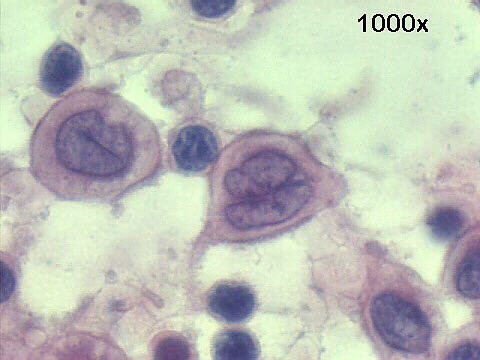

FNA lymph
node, Papanicolaou staining
Eosinophilic
granuloma or Langerhans' cell histiocytosis
Cytology of these cases is quite characteristic: very cellular smears, rich in Langerhans' histiocytes, eosinophils, some lymphocytes and plasma cells. Langerhans' histiocytes are medium to large cells, with characteristic nuclei: convoluted ones with longitudinal grooves. Most of them have a "coffee-bean" shape. Eosinophils are frequent but not necessary for the diagnosis.
Click here to see the histology of the case.

